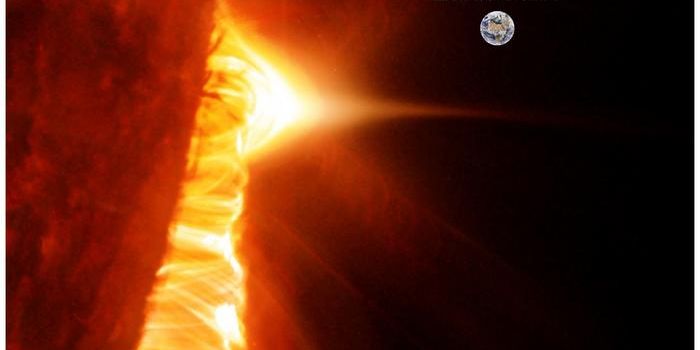Stars With Less Metal Allow for Greater Ozone Layer on Their Planets
A profound study recently published in Nature Communications could allow scientists to narrow their search for life beyond Earth, according to researchers at the Max Planck Institute in Germany. This new study discusses how the greater amounts of ultraviolet (UV) radiation from metal-rich stars could result in exoplanets not being able to produce the necessary ozone layers required for complex life to both emerge and evolve.
Credit: Max Planck Institute/hormesdesign.de
This study builds off previous Max Planck research from three years ago comparing our Sun to hundreds of Sun-like stars in the universe, and the results indicated that many of those stars experience greater fluctuations in visible light than our Sun.
“We saw huge peaks in intensity”, said Dr. Alexander Shapiro, who is a scientist at Max Planck and was involved in both the analyses from three years ago and a co-author on the current study. “It is therefore quite possible, that the Sun, too, is capable of such spikes in intensity. In that case, also the intensity of the ultraviolet light would increase dramatically.”
For the current study, the researchers used computer simulations to examine the UV radiation wavelengths discharged from the stars, and for the first time, also included how the star’s metal content influences these wavelengths. They then calculated how this UV radiation could influence the development of an exoplanet’s atmosphere, and the results were striking.
The team discovered that while metal-poor stars give off more UV radiation than metal-heavy stars, the less metal content also allows ozone layers to be produced on the orbiting exoplanets, contrary to the heavy-metal stars which destroy any attempts for an exoplanet to develop an ozone layer.
"Contrary to expectations, metal-poor stars should thus provide more favorable conditions for the emergence of life," explains DR. Anna Shapiro, who is a scientist at Max Planck and lead author of the study.
In conclusion, the study sheds light on how the universe gets older, this could result in greater hostility towards life both emerging and evolving.
What new discoveries will scientists make about stars and their ability to give life? Only time will tell, and this is why we science!
Sources: Nature Communications, Max Planck Institute
As always, keep doing science & keep looking up!









